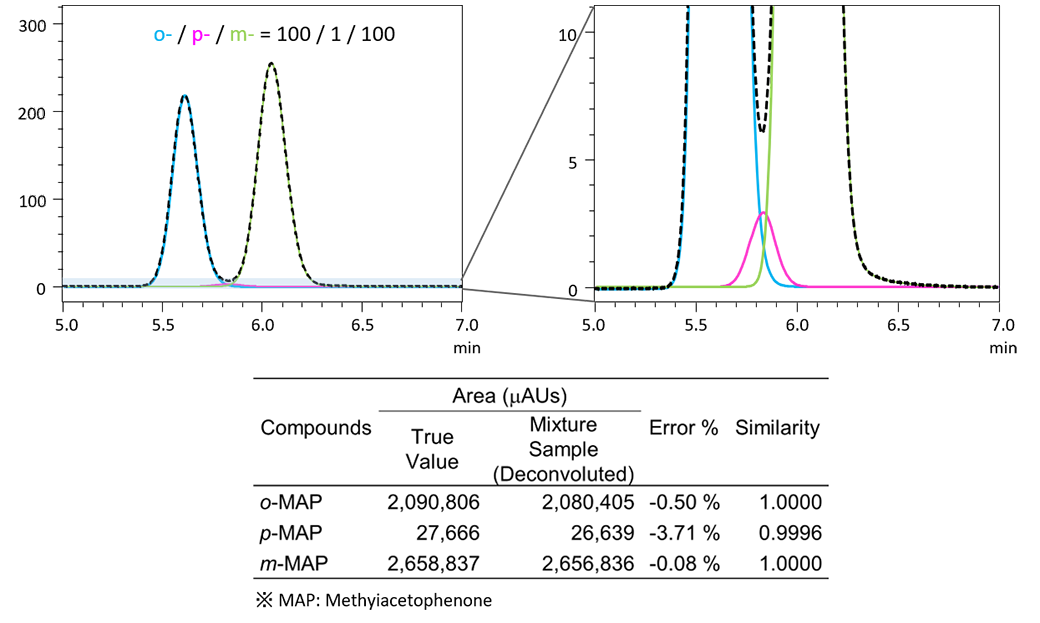Learn More About Intelligent Peak Deconvolution – i-PDeA II
Nexera Intelligent Peak Deconvolution – i-PDeA II
It is common to encounter co-eluting peaks in HPLC when developing a novel separation of an unknown sample or mix of components. Good method development will separate the eluting peaks, allowing for consistent quantitation of each compound. However, this process can be very time-consuming and laborious, requiring many instrument conditions and columns to be screened before acceptable conditions are found.
Two methods have historically been used when trying to determine the approximate amounts of compounds that are co-eluting:
- Selective integration of the peak, often integrating from the lowest point of co-elution to the baseline.
- Gaussian modeling of the peaks with the assumption that the peaks are symmetrical and have no tailing.
These approaches suffer from significant drawbacks and inaccuracies in determining the amount of co-eluting compounds. Peaks are rarely symmetrical and can seldom be split evenly. The best approach is to cleanly separate the components, but this is often too time consuming or difficult especially when only a limited amount of sample is available.

Shimadzu’s i-PDeA II algorithm in the LabSolutions software takes a new approach to this problem. It uses Mult-variate Curve Resolution with an Alternating Least Squares (MCR-ALS) technique to deconvolute co-eluting PDA peaks with just a few clicks of the mouse. This algorithm uses the UV spectra of the coeluting compounds to mathematically separate the peaks into discrete areas.
MCR-ALS techniques have an established history in fields like molecular spectroscopy and previously been used in chromatography. Shimadzu’s LabSolutions had seamlessly integrated the technique to make it more broadly accessible to the common HPLC user. Coupled with the advances in PDA detector technology of the SPD-M40 detector it can provide consistent and accurate data that could not be previously obtained!
Contact Shimadzu to find out more about the i-PDeA II algorithm and the LabSolutions software!



